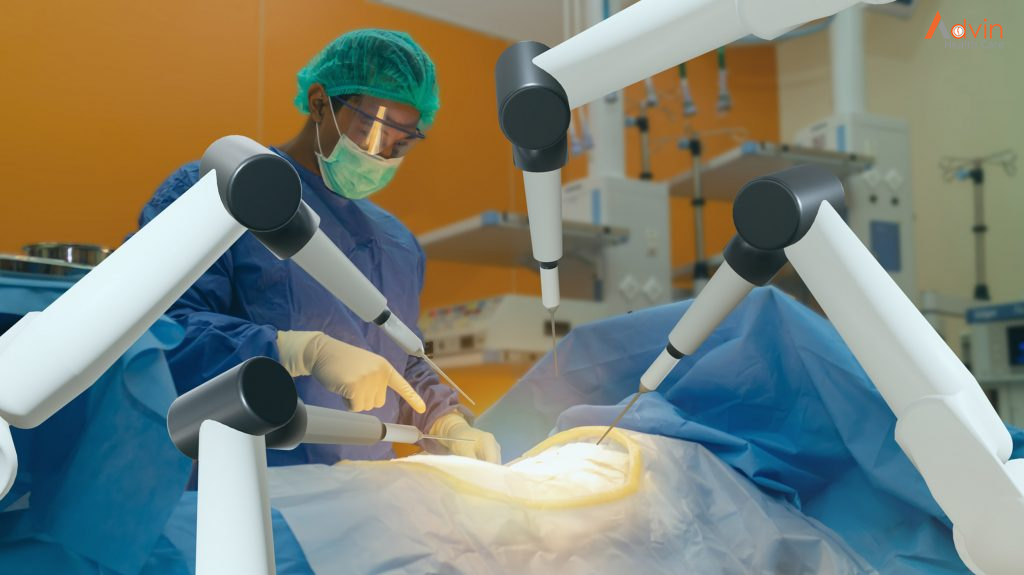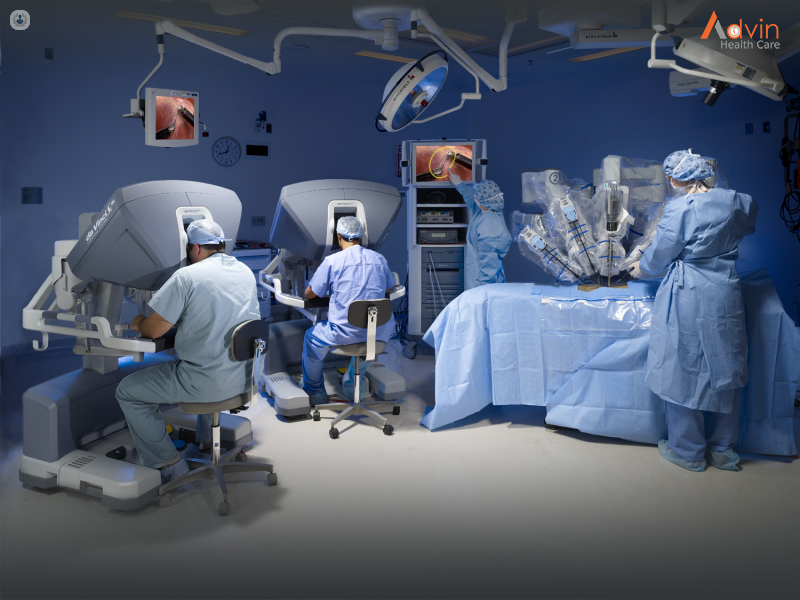Robotic surgery or Robot-assisted surgery is a specialized technique used by Robotic Urologist to enhance the overall experience and outcome of critical surgical procedures. It makes it possible for the operating urosurgeon to reach even distant and critical spaces with a very small incision. The specialist technology also offers accurate motions and increased magnification.
The main parts of a robotic technology include:
- Surgical arms – It comes with small tools and wrists that are used while performing the operation. This offers 7 degrees of freedom of movement
- Specialised lens – Provides a magnified 3D image of the surgical area.
- Surgical console – It’s kind of a dashboard for the operating surgeons to direct the movement of the device and camera.
Robotic Surgery and Urology
The enormous advancements in robotic surgery during the last ten years are expected to be surpassed by even larger advancements in the coming decade. The growing use of robotic-assisted surgical devices has propelled urology to the forefront of surgical robotics. Because accuracy is so important in pelvic procedures, urology department in Medanta has become leaders in robot-assisted surgery.
As the pelvic area is a potential space with densely packed arteries, veins, and organs, it requires a very precise intervention. Robotic surgery in urology provides several advantages that make it better than open or even laparoscopic surgery. These advantages include a decrease in the amount of blood loss, reduced patient discomfort, and minimizing the use of pain killers. It also helps in reducing the time of the hospital stay and the healing time.
What happens during Robotic Surgery?
Your operating urosurgeon will first make one or more tiny cuts as required by the procedure. Your surgeon will insert a thin tube-like device through these incisions. Instruments are put through these tubes after the robot is hooked to them. One of the holes is used to insert a long, flexible camera called an endoscope. Through the other openings, a surgical instrument that is controlled by the robotic arm is inserted. Uro surgeon sits at a dashboard a few feet away from you, controlling the robotic arm. An assistant remains at your side to assist the surgeon by shifting the instruments as needed.
Advantages of Robotic Surgery

Robotic surgery provides several advantages over conventional surgical procedures. It provides advantages to the surgical operator as well as to the patients.
Advantages to the surgeon :
- Greater precision: The robotic arm’s movements are more exact and provide better precision.
- Better visualization: A high definition camera provides magnified 3D imaging that is superior to the naked eye.
- Ability to do surgery in limited spaces inside the body
Advantages to the patients :
- Reduced pain during recovery
- Lower risk of infection.
- Reduced blood loss.
- Shorter hospital stays.
- Smaller scars.
- Quicker recovery time
- Overall better clinical outcomes
Robotic Procedures in Urology
Several urology surgeries involve the use of robots. The use of the robotic procedure in urological surgeries is because of the prolonged timing of the surgical procedure, the need for steady images, and the critical location of the surgery. Laparoscopic radical prostatectomy is one such surgical procedure that is best suited for robotic surgery. Some of the common urological surgical procedures where robotic technology is utilized are:
- Robotic prostatectomy: It is a robot-assisted surgical procedure that removes the prostate gland
- Robotic cystectomy: In this procedure, the urinary bladder is removed using robotic surgery
- Robotic Partial Nephrectomy: The tumor bearing portion of the kidney is removed while the remaining normal kidney is repaired through small holes with robotic instruments
- Robotic pyeloplasty: It is a procedure used to treat a disease known as ureteropelvic junction (UPJ) obstruction.
Other procedures include
- Nephroureterectomy
- Adrenalectomy
- Ureteric reimplantation
- Kidney transplantation


